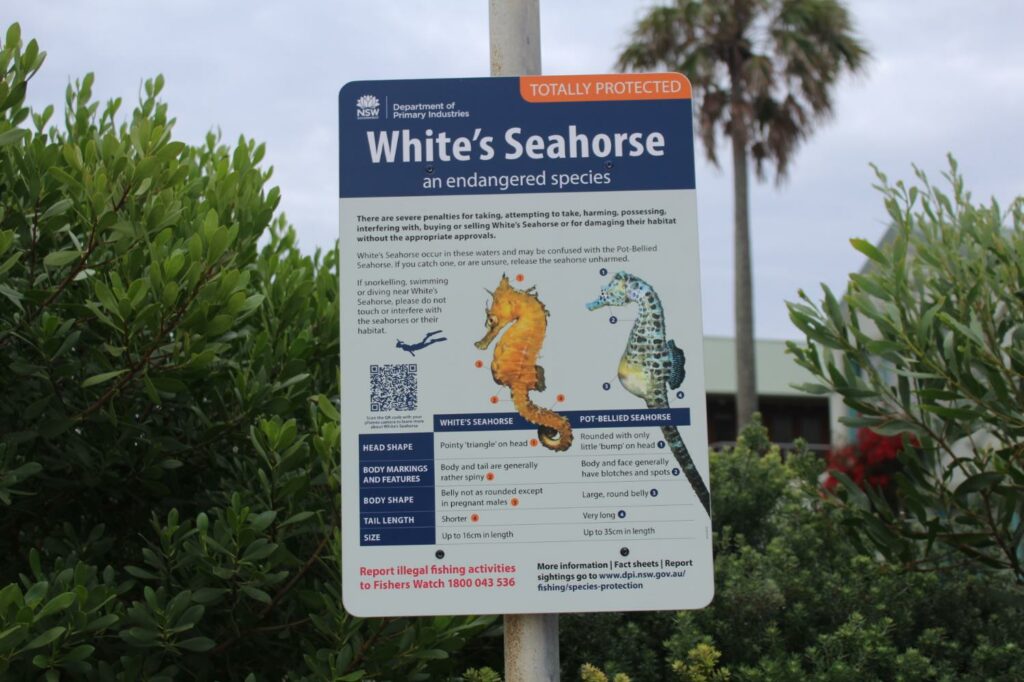The NSW Department of Primary Industries recently erected signage in Palm Beach alerting the public to the White Seahorse, which inhabits eight NSW coastal estuaries including Pittwater. Seahorses have suffered loss of natural habitats across their range in eastern Australia.
The White Seahorse is named after John White, Surgeon General to the First Fleet, and is one of four species of seahorses known to occur in NSW waters. Some of the characteristics of the White’s Seahorse includes that they have 17-18 dorsal-fin rays; sixteen pectoral-fin rays and 34-35 tail-rings. The seahorse’s coronet is tall and arranged in five-pointed star at apex; its spines are variable ranging from low to moderately developed and from round to quite sharp and they have a long snout. The seahorses have a very small anal fin which is used for propulsion, however, they are known to be one of the slowest swimming fishes in the ocean.
Seagrass meadows, including at Station Beach, are considered important habitat for the White’s Seahorse along with sponge gardens and soft corals in other coastal estuaries. This once again highlights why Station Beach must be protected and the important role it plays in providing habitat for the endangered White’s Seahorse.
As a community, we are called to prioritise our actions at Station Beach by protecting and extending the seagrass meadows so that the White’s Seahorse species can flourish.
Article and photograph courtesy of Pittwater Online News

